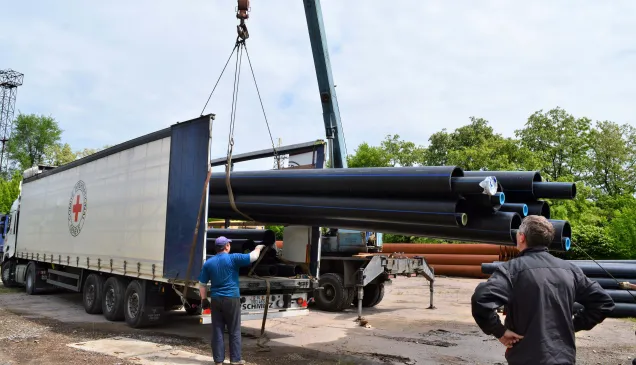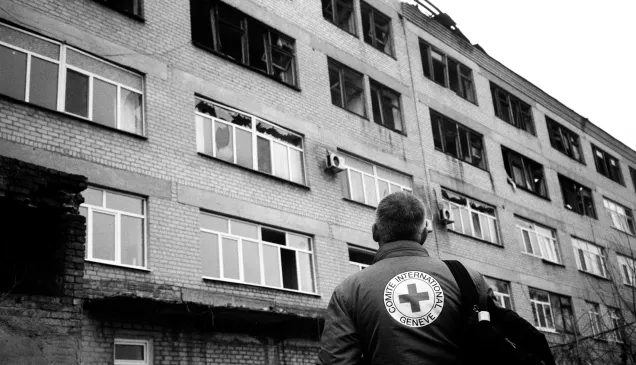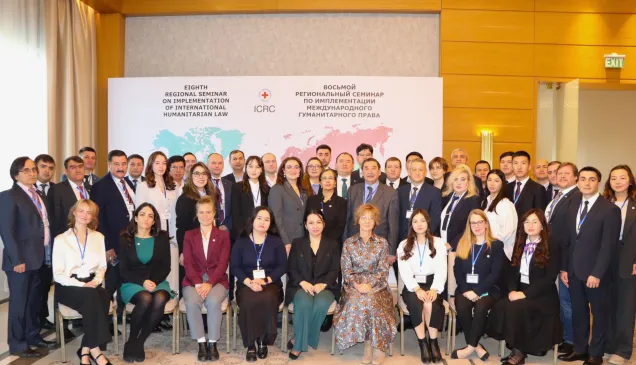Ukraine: Donetsk residents struggle for survival
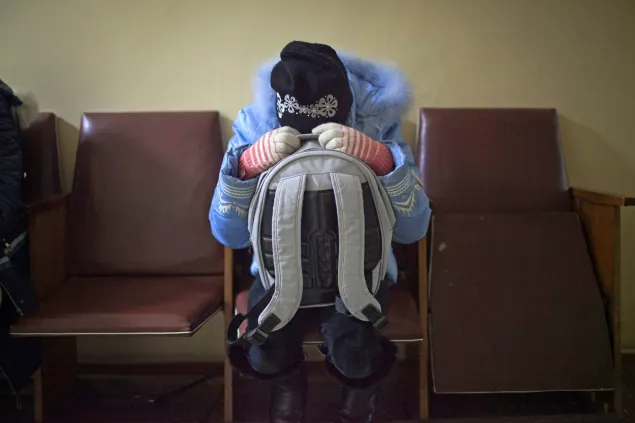
Donetsk lies in opposition-controlled territory. It has been the scene of some of the worst shelling and the heaviest civilian casualties. Fighting escalated in January 2015, with the United Nations reporting more than 220 people killed and 545 wounded during a three-week period. In March 2014, the city had a population of 1 million.
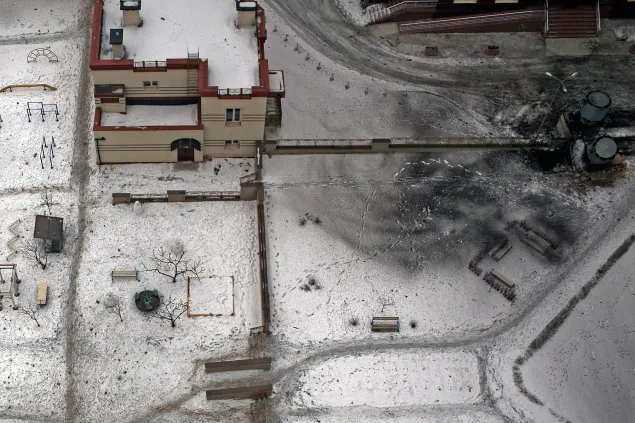
Donetsk, Ukraine, January 2015. A children's playground, seen from the air following shelling in a residential area of Donetsk.
Donetsk is the most densely populated city in the eastern part of Ukraine. In January 2015, Donetsk found itself on the front line, and virtually non-stop shelling has damaged hospitals, kindergartens, schools, homes and other civilian infrastructure. The ICRC has repeatedly reminded both sides that such indiscriminate attacks cause severe, long-term consequences for the population and are prohibited under international humanitarian law.
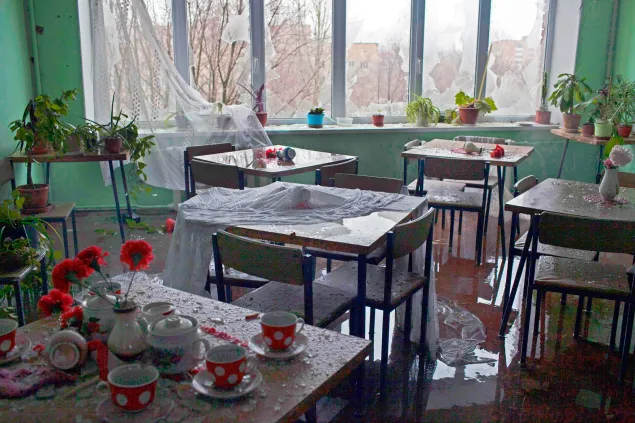
Donetsk Hospital No. 3, Ukraine, January 2015. The hospital cafeteria, damaged by shelling.
This is one of several cases of hospitals and other medical facilities coming under fire. Medical staff are working under very difficult conditions. All parties must refrain from attacking, damaging or misusing medical facilities.
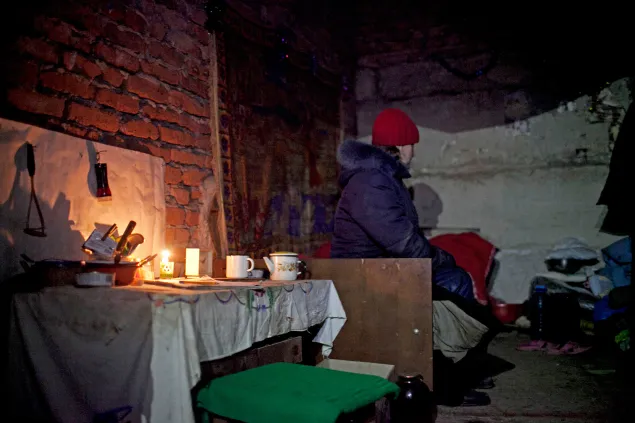
Donetsk, Ukraine, January 2015. A basement where people are living on the outskirts of the city, some 5 km from the ruined airport, as continuous shelling pounds the area. These people have had no electricity or running water for the last two weeks.
As the situation in Ukraine's conflict zone deteriorates, many people are hiding in basements for days on end. Those who emerge to collect basic aid risk injury or death. The ICRC has delivered food and other aid to 40 villages, towns and cities that lie dangerously close to the front line and have therefore suffered the most.
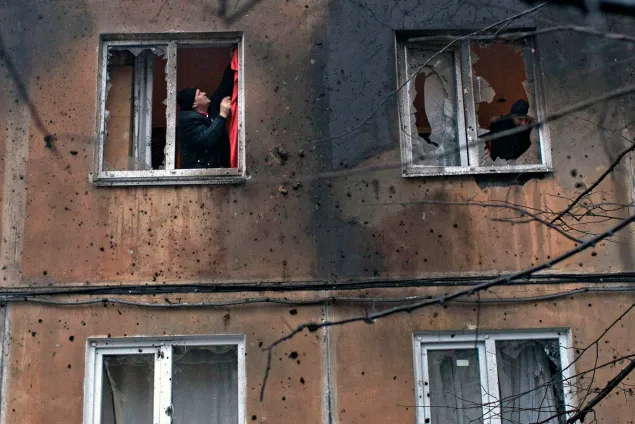
Donetsk, Ukraine, January 2015. A man tries to repair a shell-damaged window in his apartment.
Many people are in urgent need of glazing to repair windows broken in the fighting, as winters here are very cold. The ICRC is regularly delivering construction materials.
As fighting rages between government and opposition in eastern Ukraine, civilians are increasingly caught in the crossfire. By the beginning of February, more than 5,300 people had already died in the region, according to the United Nations. For those who survive, shelling has become part of the daily routine. People either leave, or else hide in basements. They desperately need safety, food, water, medicine, electricity and shelter. The ICRC is doing all it can to help, by getting urgent aid into areas hit by the fighting.

